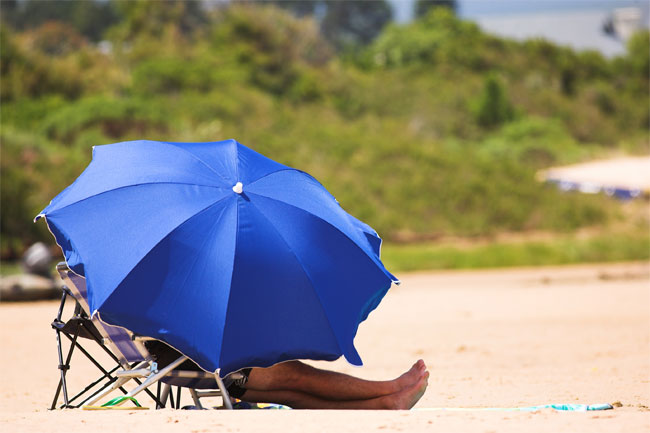Catch 22: People Who Avoid the Sun Lack Vitamin D

For those worried about skin cancer, it might be out of the sunshine and into the fire.
As relayed in a study published this week in the Archives of Dermatology, patients with a genetic condition that predisposes them to developing skin cancer – and who dutifully follow their doctor's advice to avoid sunlight during peak hours and to slather on sunscreen whenever outside – had low levels of vitamin D as a result.
All patients had below-average vitamin D levels (lower than the control group in the study without the syndrome), and over half were considered deficient. This is the clearest study to date showing the negative effect of sun protection on vitamin D levels.
Sunshine is a main source of vitamin D; the sun's ultraviolet light triggers the production of this vitamin in our bodies from precursor chemicals in our skin. The lack of vitamin D puts these patients at risk for a host of ills, from bone fractures to heart disease and even other forms of cancers.
Canary in coal mine
On one level, the study, led by Jean Tang of the Stanford University Medical Center in Redwood City, Calif., pertains to a small group of people with a rare condition called basal cell nevus syndrome (BCVS). Yet the implications for the general population are profound.
Those with BCVS serve as a canary in the coal mine. They got the message to cover up, and cover up they did. But that same message to avoid the sun is repeated to all of us because of the clear-cut link between sun exposure and skin cancer. The highest rates of skin cancer in the world are in Queensland, Australia, and in Arizona, two sunny places where fair-skinned people have migrated.
Get the world’s most fascinating discoveries delivered straight to your inbox.
Although seldom deadly, more than a million cases of skin cancer are diagnosed each year in the United States, making this by far the most common type of cancer. Upwards of 80 percent are basal cell skin cancers, the same type that BCVS patients are prone to, which is a result of too much sun exposure.
The Stanford-led study implies that if you are going to protect yourself from the sun — which is a good idea for most people with fair skin — then you need to be sure you are getting enough vitamin D in your diet or through supplementation.
Supplementation for the sunless
And herein lies the problem not discussed in the Archives of Dermatology report: Few foods have vitamin D, leaving most sun-wary adults at risk for a deficiency.
Some fish, such as salmon and mackerel, are excellent sources. That's about it. Milk is a good source, because it is fortified with vitamin D, but most adults don't drink milk, let alone the four cups needed to get 100 percent of the recommended daily amount of vitamin D. So if you avoid the sun, you might want to consider vitamin D supplements.
A much-awaited report from the U.S. Institute of Medicine reevaluating recommended daily intake of vitamin D is expected next month. Studies so far indicate that most North Americans are not getting enough vitamin D. This includes Caucasians, who are increasingly cautious about sun exposure, and African Americans, whose skin type is too dark to generate vitamin D in the dimmer months between September and April.
Unfortunately, no one can determine the precise dividing line between healthy and dangerous sun exposure. This depends on too many factors, such as skin type and sun intensity. Similarly, Jean Tang and his colleagues are not recommending more sun per se but rather more vitamin D, by whatever means most appropriate.
Christopher Wanjek is the author of the books "Bad Medicine" and "Food At Work."

Christopher Wanjek is a Live Science contributor and a health and science writer. He is the author of three science books: Spacefarers (2020), Food at Work (2005) and Bad Medicine (2003). His "Food at Work" book and project, concerning workers' health, safety and productivity, was commissioned by the U.N.'s International Labor Organization. For Live Science, Christopher covers public health, nutrition and biology, and he has written extensively for The Washington Post and Sky & Telescope among others, as well as for the NASA Goddard Space Flight Center, where he was a senior writer. Christopher holds a Master of Health degree from Harvard School of Public Health and a degree in journalism from Temple University.
